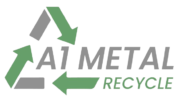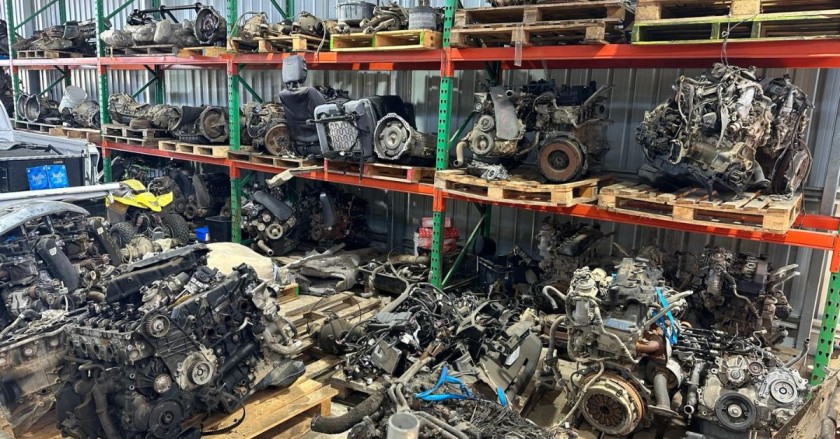In the world of metal recycling, two of the most commonly traded materials are aluminium and copper. Whether you’re a contractor, an industrial business, or just someone clearing out old appliances and wires, knowing which scrap metal brings in more profit can make a big difference.
But when it comes to selling to a scrap metal dealer, which scrap should you prioritise, aluminium or copper?
Let’s break it down in detail.
1. Understanding the Basics
Before diving into profit margins, it’s important to understand what makes aluminium and copper different from a recycling standpoint.
Aluminium Scrap
- Lightweight
- Commonly found in beverage cans, siding, window frames, car parts, and bikes
- Lower melting point (cheaper to recycle)
- Recyclable without degradation
- Extremely abundant
Copper Scrap
- Heavier and more durable
- Found in electrical wiring, plumbing pipes, motors, transformers, and electronics
- Excellent conductor of electricity
- Recyclable without loss of quality
- More scarce compared to aluminium
2. Market Price Comparison
When selling to a dealer, scrap price per kilogram or per pound is often the most decisive factor.
Copper Scrap Prices (as of 2025):
- Bare Bright Copper (clean, unalloyed wire): $6.50–$8.00 per kg
- #1 Copper: $6.00–$7.50 per kg
- #2 Copper: $5.00–$6.50 per kg
Aluminium Scrap Prices:
- Clean Aluminium (Extrusions, Sheet): $1.00–$1.50 per kg
- Mixed Aluminium (cast, dirty, foil): $0.50–$1.20 per kg
- Aluminium Cans: $0.80–$1.00 per kg
???? Takeaway: Copper scrap fetches 3 to 6 times more money per kilogram than aluminium.
3. Profitability Factors Beyond Price
While copper scrap prices is clearly has the higher tag, profitability also depends on several other factors:
Availability
- Aluminium is more common and easier to collect in bulk (e.g., cans, siding, car parts).
- Copper is harder to come by unless you have access to old wiring, electronics, or plumbing material.
Weight and Volume
- Copper is denser and heavier, so you need less space to store it compared to aluminium.
- Collecting and transporting aluminium requires more storage and trips, unless you’re dealing with heavy items like car rims or engine parts.
Sorting & Cleaning
- Dealers pay more for clean, separated scrap.
- Copper often needs to be stripped (e.g., from insulated wires) to fetch a higher grade.
- Aluminium can also be sorted into extrusions, cast, foil, etc., which affects pricing.
Processing Cost
- Aluminium is easier and cheaper to melt down and reuse.
- However, since you’re selling to a dealer, this cost is absorbed by them, not you.
4. Which Scrap Do Dealers Prefer?
Dealers love copper because:
- It holds value even in small quantities.
- It resells fast and at high margins.
- Bare bright copper is considered the “gold” of scrap.
But they also appreciate clean aluminium because:
- It comes in bulk.
- It’s in constant demand (especially for beverage cans and automotive industries).
- Easy to handle and process.
✅ In short: Dealers will always prioritise copper, but will happily accept aluminium, especially if it’s clean, sorted, and in volume.
5. Real-World Selling Scenarios
Scenario 1: Electrician Clearing Out Wire
- 30 kg of stripped copper wire → Potential $210–$240
- 30 kg of aluminium casing → Potential $30–$45
???? Profit Winner: Copper (by far)
Scenario 2: Household Cleanout
- 5 kg of copper pipes → $35–$40
- 40 kg of aluminium cans → $30–$40
???? Profit Tie (depends on volume)
Scenario 3: Auto Workshop
- Engine blocks, rims (heavy aluminium): 100 kg → $120–$150
- Wiring harnesses (copper): 10 kg of #2 copper → $60–$70
???? Profit Winner: Aluminium (due to sheer volume)
6. Tips to Maximise Profit When Selling Scrap to Dealers
- Sort your metals: Clean and separate copper from aluminium for the best rates.
- Strip insulated wires: Bare copper is worth almost double the price of insulated wire.
- Know your grades: Learn the difference between #1, #2 copper, and extruded vs. cast aluminium.
- Use a magnet: Aluminium is non-magnetic, just like copper, this helps separate from steel and iron.
- Call around: Scrap yards and dealers vary in pricing. Don’t settle for the first quote.
- Build relationships: Dealers give better rates to frequent and trustworthy sellers.
7. Which Should You Sell More Of? Copper or Aluminium?
If you’re looking for maximum profit per kilogram, copper is the clear winner. Dealers pay top dollar for high-grade copper, and even a small haul can earn you a decent payout.
However, if you have access to large quantities of aluminium, especially from cans, windows, or auto parts, you can still make good money with volume.
✅ Best Strategy: Sell both, but prioritise copper when you can get it, and use aluminium as your steady, bulk income stream.
Final Thoughts
When selling to a dealer, copper scrap is undeniably more profitable on a per kilogram basis. However, aluminium still holds value, especially when collected in large volumes and sorted correctly.
In today’s recycling economy, smart scrappers don’t pick one over the other, they learn the market, understand grading, and build relationships with local dealers to get the best prices possible.
So next time you’re about to toss out those old wires, pipes, or cans, think like a metal dealer and ask yourself:
What’s the true value of this scrap and am I getting the best deal from my buyer?



